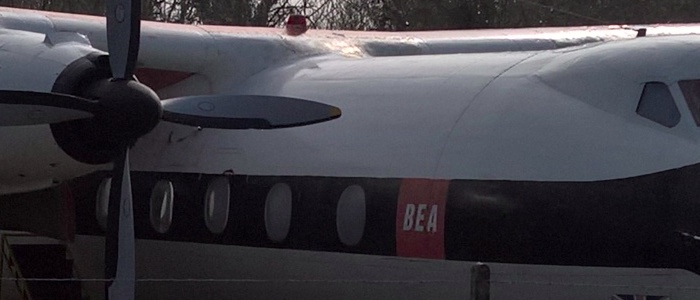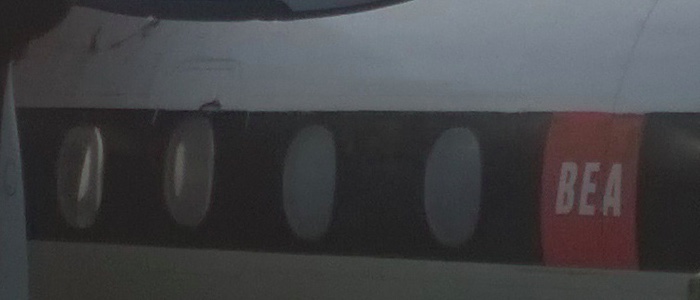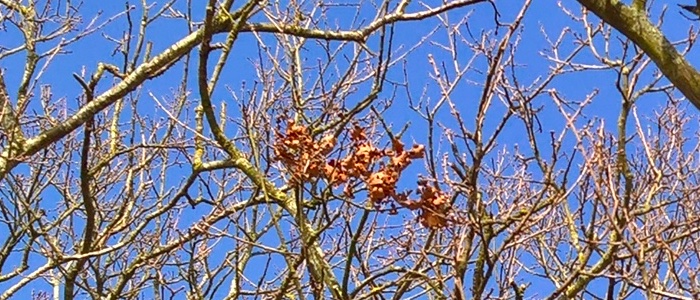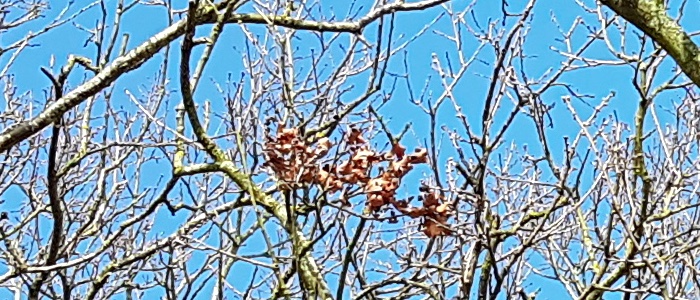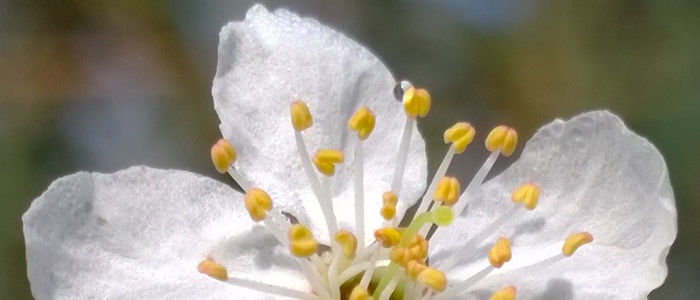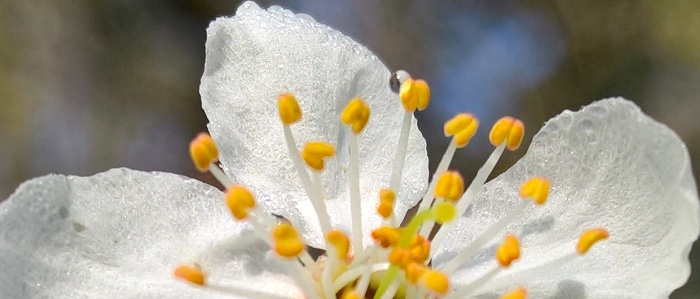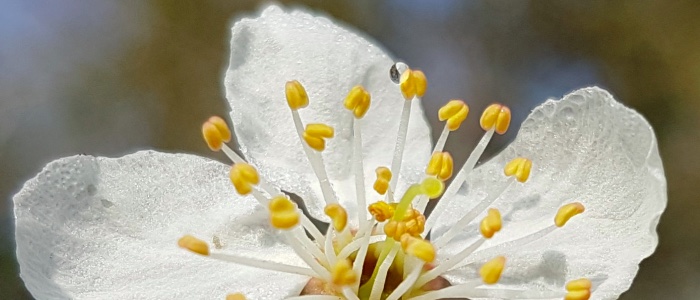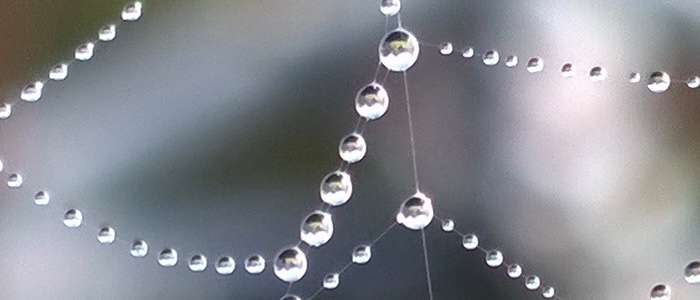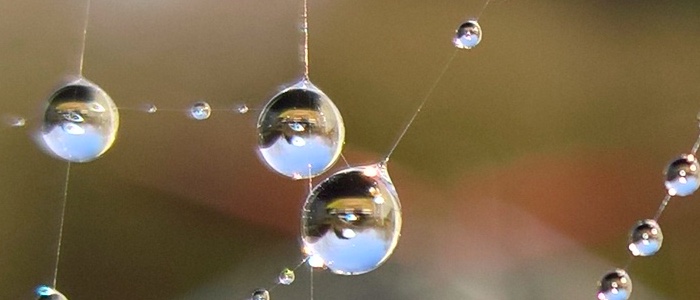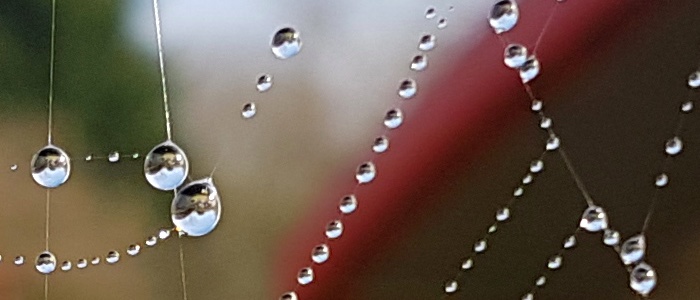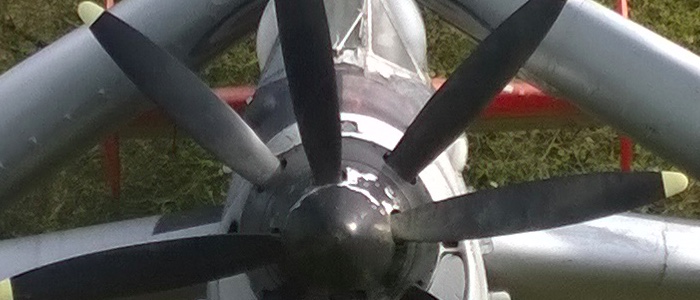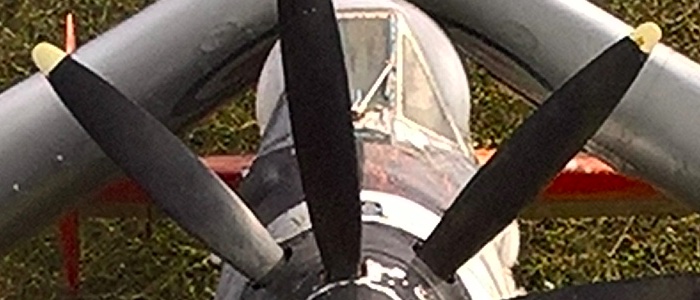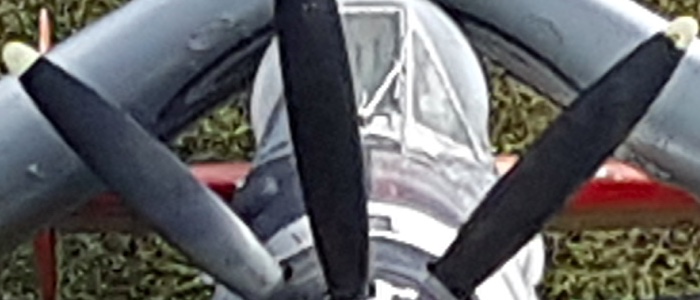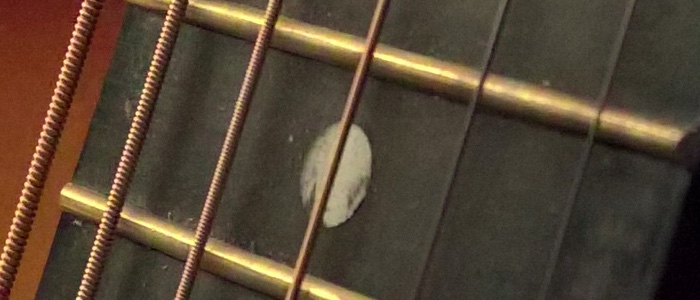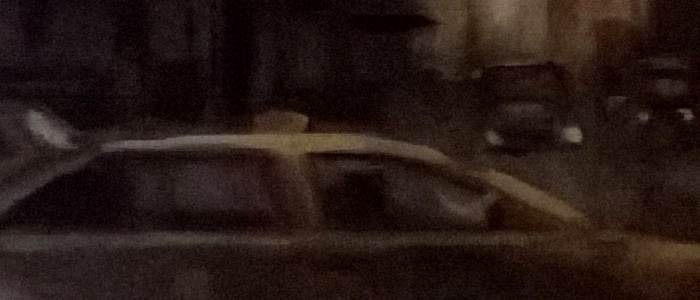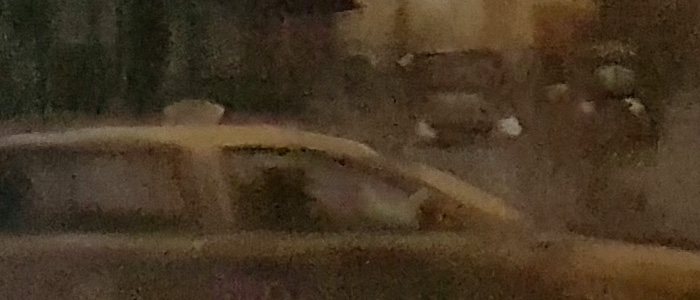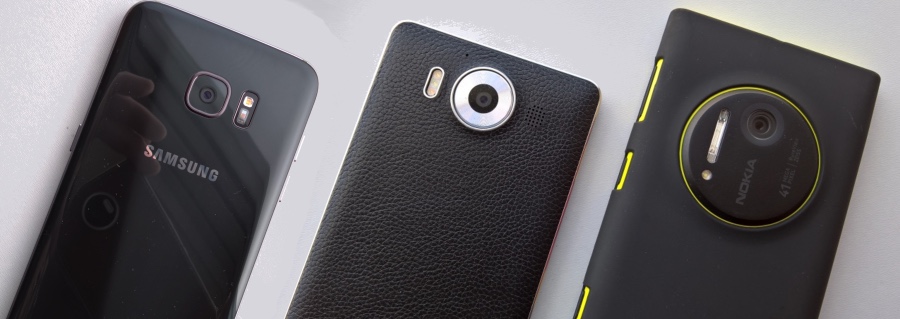
Tempting though it is to do any comparison as a two-way feature, using our comparator technology, whichever Lumia I pick to go up against the S7 will prompt howls of protest that I picked the wrong one. So a three way test it is, Galaxy S7 edge versus Lumia 950 versus Lumia 1020. Android 6.0 vs Windows 10 Mobile vs Windows Phone 8.1, though it's really all about the hardware and imaging software, of course.
The usual added complications about matching resolutions (and, to an extent, fields of view) apply, of course. Happily, the 8MP default (oversampled) resolution of the Lumia 950 and the 9MP resolution (in 16:9, of course) of the Galaxy S7 are good matches for each other. Leaving the lower 5MP oversampled resolution of the 1020 as the odd one out, though with the option to fall back on the underlying 34MP resolution should it feel embarrassed by lack of detail. I've tried to mix and match all of these sensitively, as needed, in the test shots below.
As usual, my tests span a wide variety of subjects, distances and light levels, trying to really exercise the range of these devices. And as usual, click any 1:1 image crop in order to download the original JPG, e.g. for your own analysis. Plus I'm scoring each image/crop out of 10 as we go along, in order to arrive at a definitive winner.
Test no. 1: Into hazy sun, landscape
A regular subject of mine, the Herald at my local aviation museum, here shot into hazy sun to see how the phone cameras would cope. Here's the overall scene (as shot by the 1020):
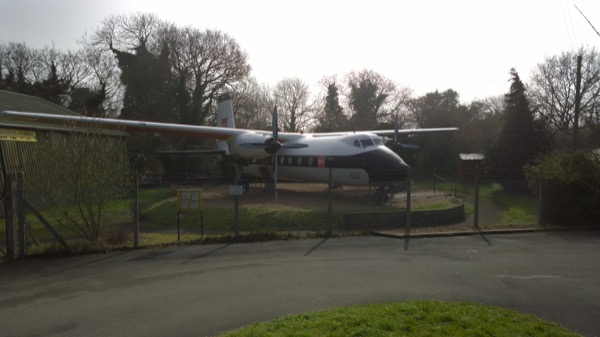
And here are crops/links from, in order, the Lumia 1020, the Lumia 950 and the Samsung Galaxy S7:
The images here do a good job of showing off the various imaging priorities, at least in terms of algorithms. The Lumia 1020 photo is very natural and realistic, while the 950 sacrifices some of this with artificial sharpening and then the S7 (edge) goes the whole hog, with large amounts of sharpening - the aim for the latter two is to look good on the phone screen, to the user, whereas the 1020's shot looked dull on its own screen yet superior here on the level playing field of a web page.
Most people would probably prefer the 1020's way of doing things at the end of the day, as it means you get a superior JPG that you can do more with, which is why I'm marking it up here. Don't worry about the field of view or resolution differences, since I could insert the 1020's 34MP crop too, should I deem it necessary. Oh, go on then:
Scores: Lumia 1020: 10 pts, Lumia 950: 8 pts, Galaxy S7: 7 pts
Test no. 2: Blue sky, natural detail
Always a test of how good a smartphone camera's algorithms REALLY are, looking at the incredible textures and fragile detail in nature, here set against a pure blue sky. Here's the overall scene (as shot by the 1020):
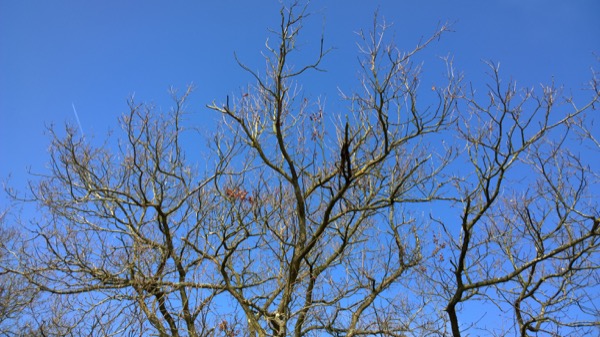
And here are crops/links from, in order, the Lumia 1020, the Lumia 950 and the Samsung Galaxy S7:
The differences in algorithms are even more pronounced than for the plane example. Here you can the effect of the Samsung Galaxy S7 edge's sharpening on a subject which has fine detail. When you look closely, the effect is really, really ugly. In contrast, the Lumia 1020, even at pixel level, feels almost like you're looking through a window at reality. While the Lumia 950's image is somewhere in between the two extremes and represents a compromise between getting the image 'pure' and optimising it to look 'super sharp' on the phone screen.
Scores: Lumia 1020: 10 pts, Lumia 950: 8 pts, Galaxy S7: 6 pts
Test no. 3: Sunny macro
A tiny, delicate flower, lit by the sun, very tricky to get the focussing right - the 1020 was hardest because of the larger optics, but both the S7 and 950 had to have a few cracks at getting the shot. Here's the overall scene (as shot by the 1020):
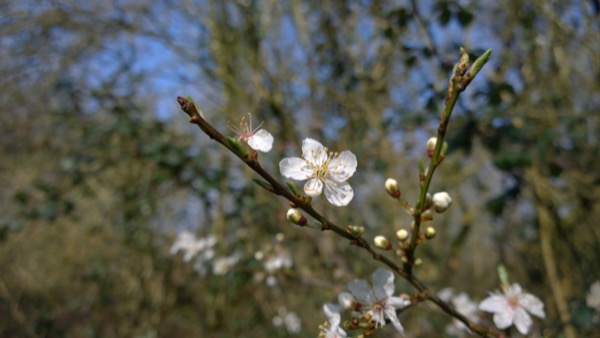
I did something a little different here - because I wanted to show the whole width of the flower below (along with bokeh), I pre-scaled the images below by a factor of around two before producing the crops here. Here they are from, in order, the Lumia 1020, the Lumia 950 and the Samsung Galaxy S7:
There's not much to choose between the images here, though the S7 perhaps edges it (no pun intended!) - more saliently, the S7 only needed a couple of seconds and two tries to get the shot, while the 950 took three of each and the 1020 had to be backed away and PureView zoom used before I was finally able to lock focus.
Scores: Lumia 1020: 7 pts, Lumia 950: 8 pts, Galaxy S7: 9 pts
Test no. 4: Tricky macro, dew on spider's web
Really, really hard to get focus on the delicate web and not on the background. Here's the overall scene (as shot by the 1020):
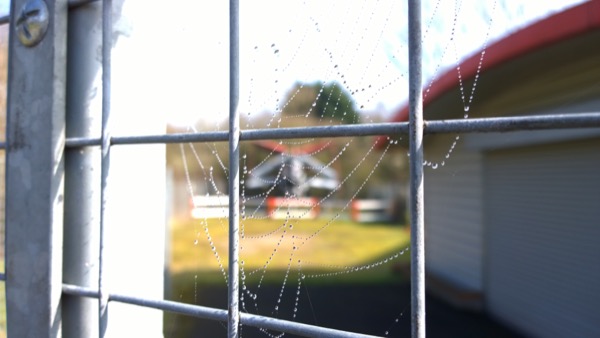
And here are crops/links from, in order, the Lumia 1020, the Lumia 950 and the Samsung Galaxy S7. Note that it proved just about impossible to get exactly the same framing and view of the drops from phone to phone, so concentrate more on the detail than the matching of the frames!:
There's a very clear pecking order here too, with the 1020 doing a great job of focussing, thanks to Lumia Camera's ability to focus 'manually', though having to use all the PureView zoom in order to get close in the first place proved a limiting factor and the detail isn't that impressive. The Galaxy S7 camera does better in terms of detail (looking in particular at the fish eye reflections in the larger drops) but comes with a heavy caveat that I had to trick the autofocus into getting the shot by focussing on my hand, in front of the shots and then quickly whipping the hand away and snapping - the S7's algorithms kept wanting to focus on the background!
Meanwhile the Lumia 950 managed to auto-focus and preserve great detail, just look at the reflections in the drops and marvel.
Scores: Lumia 1020: 6 pts, Lumia 950: 10 pts, Galaxy S7: 7 pts
Test no. 5: Sunny zoom
Time to use the zoom facilities in each phone camera properly, shooting the front of the Gannet from the museum fence - about 30 metres away. Here's the overall scene (as shot by the 1020):
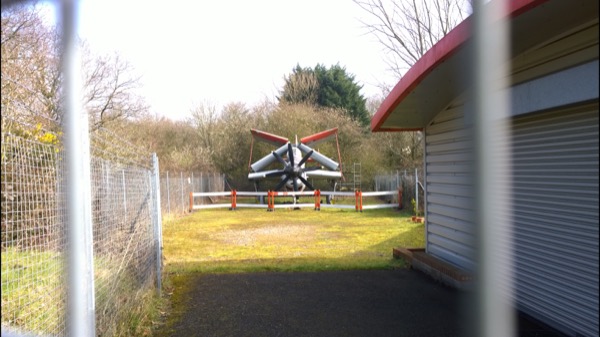
And here are crops/links from, in order, the Lumia 1020 (using its 2.5x PureView lossless zoom), the Lumia 950 (using part 2x PureView zoom and a little lossy digital zoom on top) and the Samsung Galaxy S7 (using mainly digital zoom):
Perhaps unsurprisingly, the digital ('make most of it up') zoom on the Galaxy S7 edge produces much uglier results than the largely PureView (i.e. smart cropping into the high resolution sensor) zoom on the 950 and 1020. This crop comparison shows, perhaps more than any other in this feature, the strengths of the Nokia concept of a physically large, high resolution sensor rather than using lower resolution and relying on software tricks.
It's not all doom and gloom for the S7, as we'll see below, but its results with even a little modest 2.5x zooming, as here, show approximations to detail and - again - a very ugly representation of the natural world - look at the bushes behind the plane. The Lumia 950 does well enough, but the 1020 shows that for this use case it's completely in a class of its own.
Scores: Lumia 1020: 10 pts, Lumia 950: 7 pts, Galaxy S7: 5 pts
Test no. 6: Low indoor lighting
Low light is where the going gets really tough for camera phones, of course. In this case a table lamp with 40W bulb and a guitar in the foreground. Here's the overall scene (as shot by the 1020):
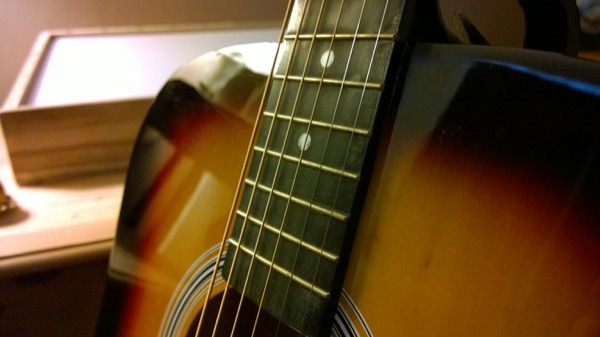
And here are crops/links from, in order, the Lumia 1020, the Lumia 950 and the Samsung Galaxy S7:
Very different results then. The Lumia 1020 doesn't really nail the focus and clarity, but does a reasonable job with colouration, the Lumia 950's advanced colour correction algorithms do an astonishingly good job of reproducing the subject with almost daylight colours, while the S7 gets closest to how my own eyes see the scene, i.e. tinged heavily with the incandescent light.
The 950 wins in terms of clarity, for sure, with better detail - see the would strings, for example.
Scores: Lumia 1020: 6 pts, Lumia 950: 9 pts, Galaxy S7: 7 pts
Test no. 7: Ultra low light
The ultimate test of how much light each smartphone camera can acquire, even in the toughest conditions. This is a print in our living room of a New York city scene (I think) and I'd made the room virtually black. To my naked eyes, I couldn't see ANY detail on the print. Here's the overall set-up (as shot by the 1020), though note that this phone photo makes it seem MUCH lighter than it really was.
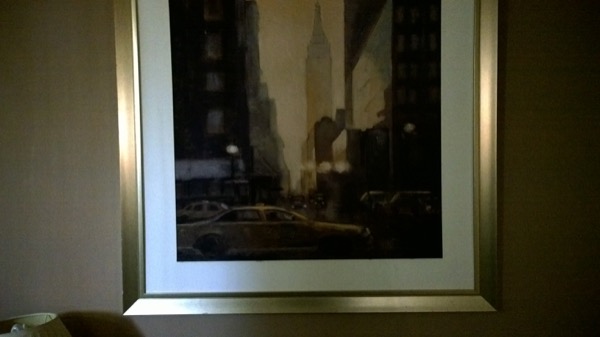
And here are crops/links from, in order, the Lumia 1020, the Lumia 950 and the Samsung Galaxy S7:
Even allowing for this being a print from a deliberately 'pointillated' (is that a word?) painting, it's clear that the f/1.7 aperture on the Galaxy S7 helps it a lot here. Moreover, it focussed instantly, even in this very low light, whereas the 1020 and 950 had to be set to use the LED flash for focus assist.
The 950's f/1.9 aperture means that it gathers quite a bit more light than the 1020 in its 1/5s exposure - the 1020 needed a full 1/3s and still produced a darker result. Overall, a definite win for the Galaxy S7, which has enough light gathering power (at least, for static scenes) to work miracles in low light.
Scores: Lumia 1020: 6 pts, Lumia 950: 8 pts, Galaxy S7: 10 pts
Test no. 8: Party time
My standard moving-subject-in-low-light test, with me laughing while the shutter is fired. In typical party conditions, lowish light and with flash definitely needed. Here's the overall scene (as shot by the 1020):
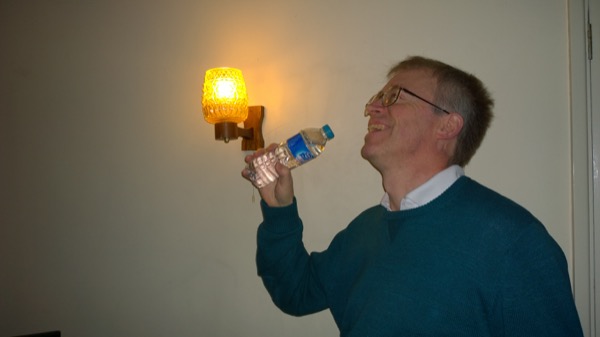
And here are scaled crops (because even I wouldn't care about pixel purity from this sort of shot!) from, in order, the Lumia 1020, the Lumia 950 and the Samsung Galaxy S7:
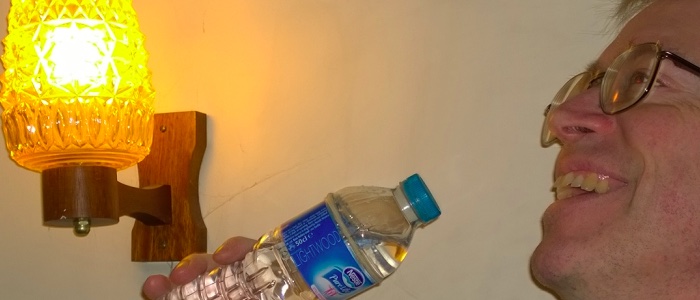


Both the Lumia 950 and Galaxy S7 went for 1/100s exposure here, with the result that, unusually for LED-flash camera phones, the moving subject is more or less frozen - we really are getting to the point where I can stop my Xenon flash ranting, at least for this use case (fill-in flash outdoors remains Xenon's last holdout!)
The 1020 shot is still the best, but the other two phones really aren't that far behind.
Scores: Lumia 1020: 9 pts, Lumia 950: 7 pts, Galaxy S7: 8 pts
Verdict
Before adding up the points and declaring a winner, I should point out, not for the first time, that camera phones aren't just about the best photo quality anymore - there's also how fast the camera function can be launched, how fast focus is acquired, how quickly multiple shots can be taken and how many extra features (like HDR) are available natively. Not to mention 4K video, 8MP frame extraction and a dozen other uses for imaging in the modern smartphone world.
And it's most of these that the Lumia 1020, from 2013, lacks, of course. Try out the two 2016 phones as cameras and you come away with a dramatically better experience in terms of speed and capability. That the 950 pips the 1020 for quality as well seals the deal for most AAWP readers, at any rate. Here are the summed scores across my demanding tests:
- Lumia 950: 65/80pts
- Lumia 1020: 64/80pts
- Galaxy S7: 59/80pts
The Samsung Galaxy S7 edge score is slightly disappointing. It's terrific in low light and its autofocus speed is unparalleled, but the ugliness of the oversharpening down at the pixel level really lets it down for anyone who wants to produce insanely good images on their phone. The S7, like the 1020 and 950, can also shoot in RAW format and at least users can then process images before all of Samsung's consumer algorithms have done their dirty work.
Overall a slender victory for the Lumia 950 then, which is proving a surprisingly good jack of all trades phone camera in terms of both performance and quality.


